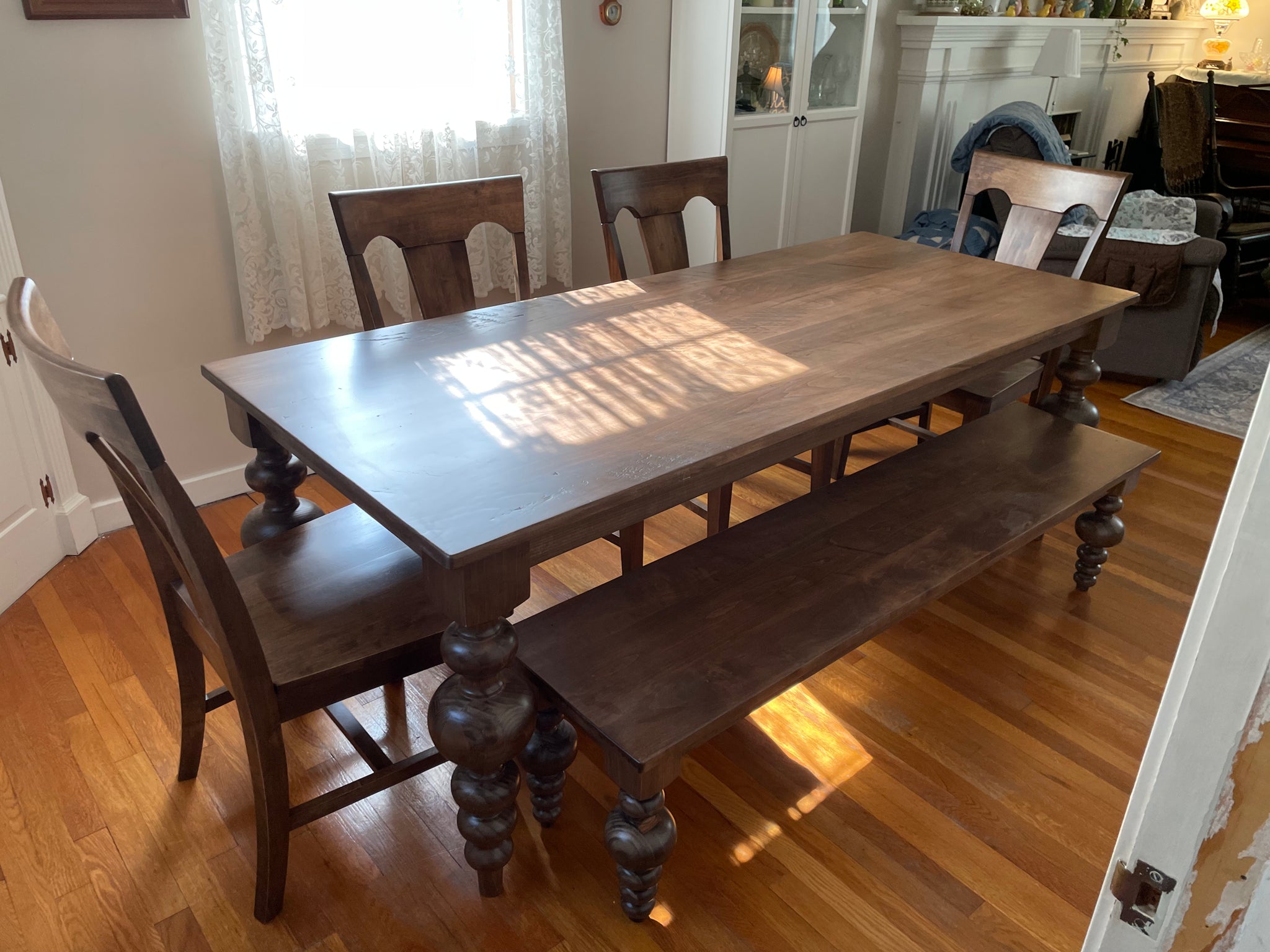From Conventional to Modern: Find the Suitable Dining-room Table Legs for Your Style
While traditional layouts such as cabriole and turned legs evoke a feeling of ageless class, contemporary designs like hairpin and geometric options present an opportunity for striking visual rate of interest. As you think about these elements, the inquiry stays: just how can you seamlessly incorporate these diverse leg designs to produce an unified eating experience?
Recognizing Table Leg Styles
The selection of dining space table leg styles can significantly influence both the looks and functionality of the area. Each leg style adds unique useful functions and visual elements, satisfying diverse style choices and usage needs. Understanding these styles is critical for choosing the best table that aligns with your general interior decoration vision.
For instance, tapered legs supply a clean, traditional look that can enhance a room's beauty, while pedestal bases give security and make the most of legroom, making them ideal for smaller rooms. Hairpin legs, a characteristic of mid-century modern design, present a commercial panache, permitting a ventilated, open feeling. Similarly, trestle legs stimulate rustic appeal, giving robust assistance and a feeling of eternity.
Wood legs can bring heat and structure, whereas metal options commonly share a streamlined, modern ambiance. Inevitably, recognizing table leg designs is crucial for creating a cohesive dining location that shows individual style while guaranteeing practicality and comfort.
Conventional Table Leg Options
When choosing dining-room table legs, standard options usually personify classic sophistication and craftsmanship. These designs reflect a rich heritage and a dedication to top quality, making them optimal for those who appreciate traditional aesthetic appeals.
One of the most legendary typical leg designs is the cabriole leg, defined by its graceful rounded shape. This layout usually features decorative makings and is most frequently located in Queen Anne and Chippendale furnishings. An additional preferred choice is the transformed leg, which boasts a collection of smooth, rounded forms that give a traditional look while preserving security.
Furthermore, the straight leg, while straightforward, uses a tough and basic structure that can blend perfectly with a variety of tabletop designs. For those drawn to ornate describing, claw-and-ball feet legs evoke a sense of magnificence and can function as a stunning focal point in any type of dining area.
Last but not least, pedestal bases, although not purely legs, offer a different typical choice that enables enough legroom and can be perfectly carved. Each of these standard leg designs adds to the total atmosphere of a dining area, marrying function with visual allure.

Modern Table Leg Styles
Modern table leg styles offer a varied series of styles that stress cutting-edge materials and tidy lines. These designs commonly focus on performance while offering as striking centerpieces within an eating room. Minimal looks prevail, with legs crafted from products such as metal, glass, and engineered wood, which contribute to a modern and ventilated feeling.
One popular read this article style is the hairpin leg, defined by its slim, tapered structure that provides stability without frustrating the table top (dining room table legs). This design is commonly located in mid-century modern furniture and can easily complement various table forms. One more pattern is the use of geometric shapes, where legs might handle angular or unbalanced forms, adding aesthetic interest and a touch of artistry

Blending Designs for Distinct Rooms
Typically, home owners seek to develop distinct eating areas that show their personal style by mixing numerous layout elements. This approach enables the consolidation of varied aesthetics, leading to a harmonious yet distinctive setting. Pairing a rustic wooden table with smooth, modern steel legs can develop an appealing comparison that boosts the space's general appeal.
In addition, integrating vintage table legs with contemporary table tops can stimulate a sense of history while preserving a modern-day perceptiveness. Such combinations not only showcase specific taste yet additionally urge creativity, enabling home owners to curate a room that really feels both individual and welcoming.
Shade plays a vital function in this blending process; choosing table legs that enhance or comparison with the existing shade system can boost visual rate of interest. Whitewashed legs can soften the boldness check it out of a dark table surface, producing a balanced visual.
Tips for Selecting the Right Legs
Selecting the right table legs is necessary for attaining both performance and aesthetic charm in your dining room. Begin by considering the overall design of your area. Typical setups benefit from legs that include detailed makings or transformed layouts, while modern areas may require sleek, minimal designs.
Next, evaluate the height and stability of the legs. dining room table legs. Basic eating tables vary in between 28 to 30 inches in height, so ensure the legs enhance this dimension for convenience. In addition, durable products, such as wood or steel, can boost stability and longevity
Assess the leg shape too-- alternatives include directly, tapered, or pedestal designs. Straight legs use a timeless look, while tapered legs can add a touch of style. Pedestal bases supply ample legroom and are ideal for smaller sized spaces.
Final Thought
In recap, choosing the excellent dining room table legs needs careful consideration of both contemporary and traditional styles. By harmonizing leg her response style, height, and material with the overall decoration, a natural and welcoming ambience can be accomplished.
The variety of eating area table leg designs can considerably influence both the looks and functionality of the area. Inevitably, recognizing table leg designs is important for developing a natural dining location that mirrors individual design while ensuring functionality and convenience.One of the most legendary traditional leg styles is the cabriole leg, identified by its graceful rounded form. Straight legs offer a timeless look, while conical legs can add a touch of style.In recap, selecting the excellent dining room table legs calls for cautious factor to consider of both contemporary and standard designs.